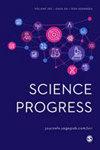Electrodiagnosis of polyneuropathy, organmegaly, endocrinopathy, M-protein, skin changes syndrome patients with peripheral neuropathy and potential-related risk factors
IF 2.6
4区 综合性期刊
Q2 MULTIDISCIPLINARY SCIENCES
引用次数: 0
Abstract
Objectives:To explore the correlation between classification and electrophysiology of polyneuropathy, organmegaly, endocrinopathy, M-protein, skin changes syndrome (POEMS)-related peripheral neuropathy (PN).Methods:We analyzed the data of 30 POEMS patients admitted to Zhongshan Hospital affiliated with Fudan University between February 2017 and February 2023. The degree of PN was determined according to its classification. All three groups of patients underwent neuroelectromyography, and the nerve conduction velocity and amplitude of the three groups were analyzed.Results:The compound motor active potentials (CMAP) of the peroneal, tibial, and ulnar nerves decreased significantly with increasing disease grade, and the motor conduction velocity of the peroneal, median, and tibial nerves decreased significantly in grade 3 compared with grade 1 and 2. The action potential of sensory nerves (sensory nerve action potential) and the conduction speed of sensory impulses (sensory conduction velocity (SCV) in the sural nerve in grade 3 were significantly lower than those in grades 1 and 2. Linear regression analysis showed that there was a linear correlation between CMAP of peroneal nerve and vascular endothelial growth factor. The SCV of the ulnar nerve significantly correlated with the course of the disease.Discussion:Neuroelectromyography can effectively evaluate the degree of PN in patients with POEMS, providing a reliable reference for further clinical treatment.多发性神经病、器官异常、内分泌病、M 蛋白、周围神经病变患者皮肤变化综合征的电诊断及潜在的相关风险因素
目的:探讨多发性神经病、器官异常、内分泌病、M蛋白、皮肤改变综合征(POEMS)相关周围神经病变(PN)的分类与电生理学之间的相关性。方法:我们分析了复旦大学附属中山医院在2017年2月至2023年2月期间收治的30例POEMS患者的数据。PN的程度根据其分类确定。结果:随着疾病分级的增加,腓总神经、胫神经和尺神经的复合运动活动电位(CMAP)明显下降,腓总神经、正中神经和胫神经的运动传导速度3级较1级和2级明显下降。感觉神经的动作电位(感觉神经动作电位)和感觉冲动的传导速度(感觉传导速度(SCV))在 3 级明显低于 1 级和 2 级。线性回归分析表明,腓总神经的 CMAP 与血管内皮生长因子呈线性相关。讨论:神经肌电图能有效评估 POEMS 患者的腓总神经损伤程度,为进一步临床治疗提供可靠的参考。
本文章由计算机程序翻译,如有差异,请以英文原文为准。
求助全文
约1分钟内获得全文
求助全文
来源期刊

Science Progress
Multidisciplinary-Multidisciplinary
CiteScore
3.80
自引率
0.00%
发文量
119
期刊介绍:
Science Progress has for over 100 years been a highly regarded review publication in science, technology and medicine. Its objective is to excite the readers'' interest in areas with which they may not be fully familiar but which could facilitate their interest, or even activity, in a cognate field.
 求助内容:
求助内容: 应助结果提醒方式:
应助结果提醒方式:


